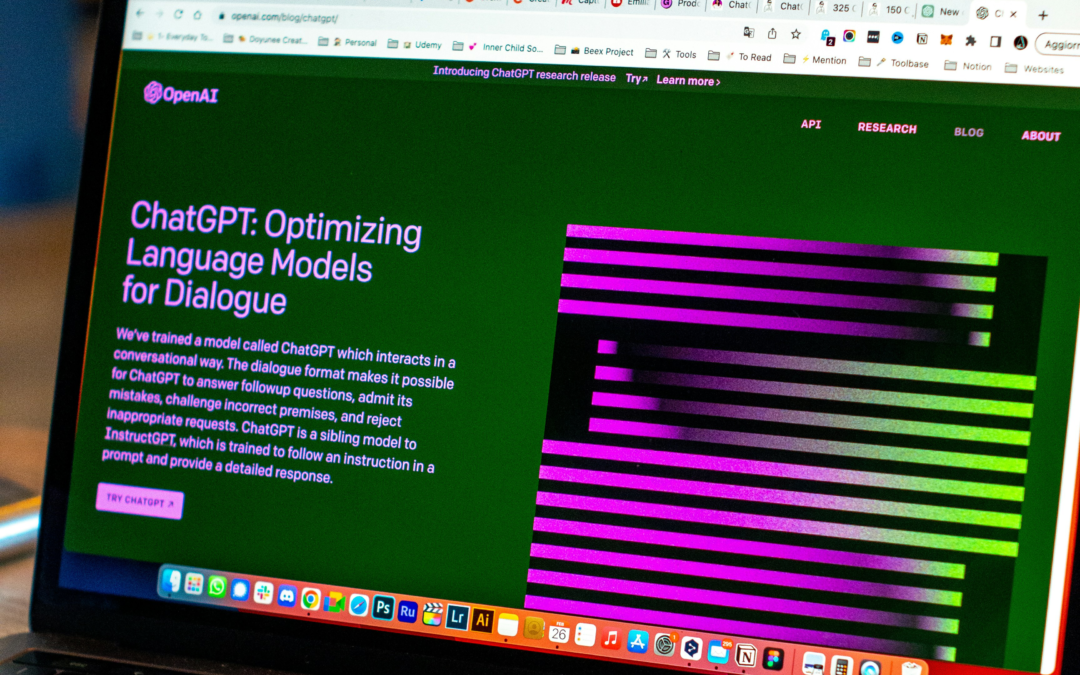How to get the best from AI for instructional design
AI offerings are evolving at breathtaking speed, and it can be hard for L&D professionals to know how to best use AI for instructional design. We explain a range of AI solutions that can help instructional designers creatively and efficiently develop engaging and impactful learning experiences.
In the dynamic landscape of instructional design, AI integration has emerged as a revolutionary force, streamlining workflows and enhancing learning experiences. Many tools now seamlessly integrate AI-driven features, making them more accessible than ever. Here are some ways AI is reshaping instructional design.
Unlocking Inspiration with Adobe Creative Suite
Adobe Creative Suite, a staple in the designer’s toolkit, has embraced AI to empower instructional designers with enhanced creativity and efficiency. One standout feature is Adobe Sensei, the AI engine powering several applications within the suite.
Consider Adobe Photoshop, for instance. With features like Content-Aware Fill and Select Subject powered by AI, designers can effortlessly remove unwanted elements from images or make precise selections with just a few clicks. This expedites the design process and opens up new possibilities for visually captivating learning materials.
In Adobe Illustrator, AI-driven tools like Puppet Warp and Freeform Gradient enable designers to manipulate shapes and colours with unprecedented flexibility and precision. Whether creating custom illustrations or infographics, AI empowers designers to easily bring their creative visions to life.
Crafting Engaging Content with AI-Powered Storyboarding
Storyboarding is a crucial stage in instructional design, laying the foundation for engaging multimedia content. AI-powered storyboarding tools, such as Storyboard That, leverage machine learning algorithms to generate dynamic visual narratives based on user input.
Imagine inputting a script or scenario into the software and receiving a storyboard with characters, scenes, and dialogue. This accelerates the storyboarding process and fosters collaboration and iteration, allowing designers to refine their ideas quickly and efficiently.
ChatGPT: Your Virtual AI for Instructional Design Collaborator
Now, let’s explore ChatGPT – the conversational AI developed by OpenAI. ChatGPT is a virtual collaborator that assists instructional designers in generating human-like text responses and simulating interactive conversations.
However, ChatGPT can also be utilised as a powerful tool for content creation without necessarily simulating chatbot interactions. Instructional designers can leverage ChatGPT’s language generation capabilities to brainstorm ideas, draft course materials, or write engaging narratives.
By providing specific prompts or topics to ChatGPT, designers can prompt the AI to generate relevant text content for various learning materials. For example, designers can input prompts such as “Explain the concept of cognitive load theory” or “Create a scenario-based learning activity for conflict resolution skills”.
With ChatGPT’s ability to generate coherent and contextually relevant text based on input prompts, instructional designers can efficiently produce content for e-learning modules, presentations, assessments, and more. This streamlines the content creation process and allows designers to focus on refining and polishing the generated material to meet their specific instructional goals.
Incorporating ChatGPT into instructional design workflows as a content creation tool enables designers to access a wealth of generated content quickly and efficiently. Whether it’s drafting course outlines, creating learning objectives, or developing instructional scripts, ChatGPT can serve as a valuable virtual collaborator, helping designers generate high-quality content for their e-learning projects.
Harnessing AI Analytics for Data-Driven Insights
Beyond content creation, AI-driven analytics tools are pivotal in shaping instructional design strategies and optimising learning outcomes. Platforms like Adobe Analytics and Google Analytics utilise machine learning algorithms to analyse learner behaviour, track engagement metrics, and uncover actionable insights.
By harnessing AI-driven data analytics, instructional designers gain valuable insights into learner preferences, performance trends, and content effectiveness. This enables them to tailor learning experiences to individual needs, maximise engagement, and drive continuous improvement.
As you can see, AI is not merely a technological trend – it’s a catalyst for innovation and transformation in instructional design. By embracing AI-driven tools like Adobe Creative Suite, AI-powered storyboarding platforms, and ChatGPT, instructional designers can unlock new levels of creativity, efficiency, and effectiveness in creating engaging and impactful learning experiences. Let’s harness the power of AI to reimagine the future of e-learning together.
We Can Help You Discover the Right AI Solution for Your Needs
If you are looking to leverage AI in your instructional design projects but unsure where to start then reach out to the Complete Learning team! Our experts can help you navigate the landscape of AI for instructional design and find the right solution for your needs.
Contact us today to embark on your AI-powered journey towards impactful learning experiences

